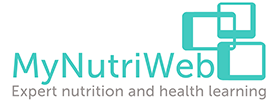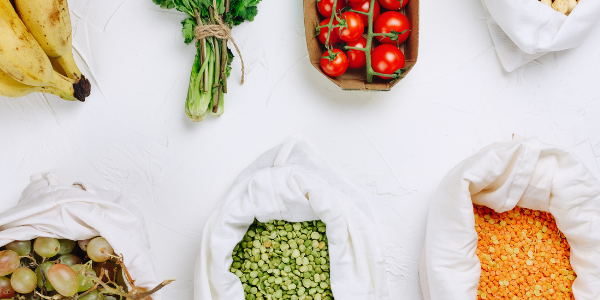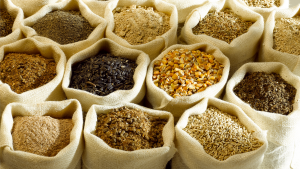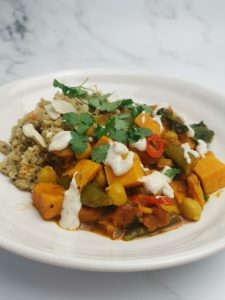We invited Cristian Costas Batlle to talk us through the benefits of people with coeliac disease shifting towards a more sustainable gluten-free diet – which can help to save money, improve certain symptoms and improve nutritional adequacy. Plus he provides a full day gluten-free, sustainable meal plan.
Cristian Costas Batlle is a Specialist Gastroenterology Dietitian specialising in coeliac disease. He runs a dietetic-led coeliac service in the NHS and also works in private practice. In 2020, he was awarded with the GUTS UK and Dr Falk Dietitian recognition award for improving care in gastroenterology. In 2021, he was a CN double award winner: Clinical Nutrition Professional of the Year and Social Media Personality of the Year for his work in coeliac disease.
Costas Batlle is a Specialist Gastroenterology Dietitian specialising in coeliac disease. He runs a dietetic-led coeliac service in the NHS and also works in private practice. In 2020, he was awarded with the GUTS UK and Dr Falk Dietitian recognition award for improving care in gastroenterology. In 2021, he was a CN double award winner: Clinical Nutrition Professional of the Year and Social Media Personality of the Year for his work in coeliac disease.
What is coeliac disease and what does the gluten-free diet look like?
Coeliac disease (CD) is an autoimmune condition triggered by the consumption of gluten which can damage the small intestine and cause symptoms and complications. The only treatment available is to remove dietary gluten found in certain grains like wheat, barley, rye and gluten-contaminated oats. This is challenging to do for life, as more than 10-50mg of gluten can cause damage to the small intestine and cause symptoms, meaning that both gluten containing ingredients and foods cooked or processed with gluten need to be avoided.
Once diagnosed, people with CD will often feel safer by shopping in supermarkets’ ‘Gluten Free’ section because foods that are labelled ‘gluten free’ are required to have less than 20 parts per million of gluten by law – a safe level for people with CD.
However, gluten-free alternatives in this section (including pasta, bread and many other products) have also been found to be up to 443% more expensive and be lacking in vitamins, minerals, protein and fibre compared to their gluten-containing counterparts. Consequently, a long-term over reliance on processed gluten-free foods can lead to a more expensive diet that is nutritionally inadequate.
Improving the gluten-free diet by eating more sustainably
One way to improve nutritional adequacy of the gluten-free diet (GFD) and reduce its cost is by shifting to a more sustainable way of eating. Sustainable diets are those diets with a low environmental impact, which contribute to food and nutrition security and to healthy life for present and future generations.
This can indeed be a positive diet shift for people with CD, because if applied in the right way, it can encourage people to eat more naturally gluten-free foods and incorporate more diversity into their diet by including more plant-based foods. In turn, increasing plant-based foods that are rich in fibre, vitamins and minerals can counter the nutritional limitations linked to many gluten-free labelled foods – providing increased opportunities for gluten-free diets to achieve nutritional adequacy and optimise digestive health.
- Adding diverse fruits, vegetables, pulses, nuts and seeds into the diet can all contribute to calcium, iron, vitamin D and folate intake, which are important to optimise for people with CD, as they may not be readily absorbed so well in some
- People with CD are also more likely to develop lactose intolerance, which can be a double-edged sword because adults with coeliac disease have increased calcium requirements of 1000mg per day. So, it is important to help patients achieve this by also suggesting non-dairy sources of calcium (like almonds, dried fruit, spinach, kale, soya, oranges, etc) and ensuring plant-based milk alternatives are fortified with calcium
- Once established on a GFD, people with CD can often suffer from constipation. This commonly happens because fibre is reduced when people go on a GFD, since wheat plays an important role in contributing to fibre intake. Therefore, people with CD benefit from being encouraged to make up for this fibre deficit by increasing th
 eir intake of plant-based foods through foods like nuts, seeds, gluten-free oats, pulses and gluten-free whole grains. Furthermore, by combining these foods to aim for at least 25–29g of fibre daily, risk of all-cause mortality and incidence of coronary heart disease, type 2 diabetes, and colorectal cancer can be significantly reduced.
eir intake of plant-based foods through foods like nuts, seeds, gluten-free oats, pulses and gluten-free whole grains. Furthermore, by combining these foods to aim for at least 25–29g of fibre daily, risk of all-cause mortality and incidence of coronary heart disease, type 2 diabetes, and colorectal cancer can be significantly reduced. - Diversifying the diet with different grains beyond rice also helps the GFD incorporate more fibre and nutrients from different sources. When it comes to the environment, it’s win-win: ancient gluten-free grains like buckwheat, quinoa, amaranth, millet, sorghum and others have the ability to grow despite harsh environmental conditions that other major grains would not withstand, and this can make them more sustainable due to needing less resources to grow
A shift towards including more naturally gluten-free plant-based foods can also help people avoid processed vegan and vegetarian labelled foods that are can be more costly and less nutritionally adequate than their meaty counterparts. (What’s more, the labelled products can often contain gluten or be handled with gluten, which makes things even more challenging for people with CD.) By focusing on naturally gluten free plant-based foods, there are less labels to read when shopping. And the money saved on meat products can be used to pay for more expensive gluten free labelled foods when needed.
It is also worth highlighting that perceived difficulty of following the gluten free diet is one of the main factors associated with patients not following the diet. Therefore, showing patients that there are plenty of cheap, naturally gluten-free options outside of the ‘gluten free’ section can encourage them to remain on the diet for longer and ensure their dietary treatment reduces the risk of developing further complications.
Summary
How can we support people with CD to have a nutritionally adequate diet when shifting towards a more sustainable pattern of eating?
- Show them how to read a food label so they can shop confidently outside the gluten free section.
- Encourage them to use other gluten-free grains like millet, amaranth, sorghum, buckwheat, gluten free oats and quinoa rather than just using rice or gluten-free cereal/bread/pasta.
- Encourage them to include a variety of fibre sources from nuts, seeds, pulses, fruits, vegetables and wholegrains.
- Encourage them to include plant-based foods rich in fibre, folate, iron, calcium and vitamin D.
- Explain that reducing meat consumption can also save money to pay for more expensive gluten free labelled products when needed.
- Remind them that naturally gluten free foods are likely to be better for overall health.
- Remind them that diversifying their diet will help them to look forward to the diet long-term and not make it feel as restrictive.
Full Day Meal Plan
Here is a one day plant-rich menu plan, with sustainability in mind, to help give an example of how nutritional needs can be met despite being gluten free.
- Breakfast – Buckwheat porridge made with milk or plant-based milk alternative (fortified with vitamins & minerals), topped with fruit, nuts and seeds
Buckwheat is a grain that’s naturally gluten free and makes a great alternative to oats in porridge. Soak 50g buckwheat groats in water overnight and then pulse in a food processor until smooth (leave some texture) with 125ml milk or plant-based milk alternative. Bring the mixture to boil and cook for about 5 minutes and then top with seasonal fruit, nuts & seeds. If opting for plant-based milk alternatives, choose ones fortified with vitamins and minerals. Organic ones tend to not be fortified so check the label.
- Lunch – Sweet potato, chickpea and kale Moroccan tagine, with apricot quinoa and yoghurt tahini dip.
This is a fibre rich meal using chickpeas as the protein source and is served with quinoa, which is naturally gluten free. The extra yoghurt and tahini dip provide extra calcium and the vitamin C within the meal (coming from the sweet potatoes, peppers and tomatoes) help improve iron absorption – an important nutrient to consider when switching to a more plant-based diet. This meal alone provides 67% of daily fibre recommendations. Find the recipe on the MyNutriWeb Instagram
- Snack – Milky drink (using milk or a plant-based milk alternative fortified with vitamins & minerals)

Having a milky drink such as a sugar free latte helps contribute to increased calcium requirements in coeliac disease.
- Dinner – Mexican bean and lentil chilli served with cooked millet and steamed broccoli
Millet is a gluten free grain that can be used as an alternative to rice. Simply cook according to packet instructions and use as you would use rice. For more advice on gluten free grains, take a look at the Coeliac UK Guide to Gluten Free Grains. Find the chilli recipe on the MyNutriWeb Instagram
- Snack – Single pot of yoghurt (or plant-based yoghurt alternative) (125g) and a 30g portion of dried figs.
Both the yoghurt and the dried figs provide an extra source of calcium.
Related MyNutriWeb Content
Coeliac Disease Part 1: Diagnosis and Management (2022)- 60 mins webinar with Cristian Costas Batlle
Coeliac Disease Part 2: Deep Dive into the Gluten Free Diet (2022) – 60 mins webinar with Cristian Costas Batlle
Coeliac Disease Resource Blog (2022) – A collation of handy resources relating to the above Coeliac Disease Series
Shifting Food Systems (2021) – Half day e-symposium with a focus on sustainable diets
Eating Sustainably Without Nutrient Compromise (2020) – 60 mins webinar
Sustainable Diets BDA One Dot Webinar (2020) – 60 mins webinar


 eir intake of plant-based foods through foods like nuts, seeds, gluten-free oats, pulses and gluten-free whole grains. Furthermore, by combining these foods to aim for at least 25–29g of fibre daily,
eir intake of plant-based foods through foods like nuts, seeds, gluten-free oats, pulses and gluten-free whole grains. Furthermore, by combining these foods to aim for at least 25–29g of fibre daily, 




